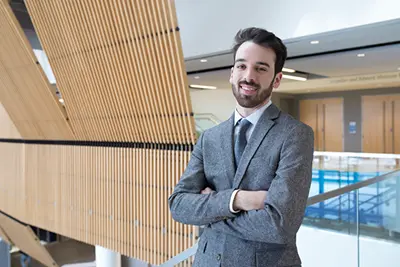Professors Find Prosecutors Sideline Cases When Guilty Verdict is in Doubt
 Image by K. Webster
Image by K. Webster
04/17/2019
By Katharine Webster
For every 100 rapes and sexual assaults of teenage girls and women reported to police, only 18 lead to an arrest, according to a study conducted by three professors in the School of Criminology and Justice Studies under a $1.19 million grant from the National Institute of Justice.
Forty-two out of 100 languish as “inactive” cases, while 30 more are closed by “exceptional clearance” – a designation that is supposed to mean that police have enough evidence to arrest a suspect but can’t do so for reasons outside their control, such as the death of the suspect or his arrest in another jurisdiction.
“Arrest is the least likely outcome, apart from the small number of reports that are determined to be unfounded,” says Prof. April Pattavina. “The fact that so few cases end in arrest is troubling, especially since we know that most victims are reluctant to go to police in the first place.”
The researchers – principal investigator and Assoc. Prof. Melissa Morabito, Pattavina and Prof. Emerita Linda Williams, who is also a senior research scientist at the Wellesley Centers for Women – wanted to understand why so few rape and sexual assault reports result in arrest and what leads to further attrition as those cases make their way through the system.
What they found was disheartening for victims, they say. Even when suspects were arrested, prosecutors sometimes declined to file charges, foreclosing further investigation, while other cases fell apart because investigations took so long.
“From report to arrest to prosecution through disposition, so many reports get dumped out of the system,” Pattavina says.
Ultimately, fewer than 7 percent – 189 out of 2,887 rape and sexual assault reports made to police over two years in six jurisdictions – resulted in convictions.
The researchers’ analysis, which included a review of police and court records along with in-depth interviews with police investigators and prosecutors, suggests that one major problem is the overuse and misuse of “exceptional clearance” and “open/inactive” designations when prosecutors think they cannot win at trial.
“A lot of times, detectives felt like they had really good, solid cases with enough evidence to make an arrest, but prosecutors declined to go forward,” Morabito says.
Police and prosecutors cited victims’ lack of cooperation as a major cause of closing cases with “exceptional clearance” or for designating them as inactive. But that’s problematic, too, Morabito and Pattavina say.
“Victims may feel they’re not being treated with respect by police or prosecutors, or they might not have the resources to keep going back for interviews that require them to take time off from work, find child care, or something else,” Pattavina says. “We need to understand what part of case attrition is victim decision-making and what part is a lack of resources.”
Morabito says a lack of resources for police and prosecutors is also to blame for low arrest and conviction rates. Sex crime investigations require time and painstaking work, but budgets and manpower are inadequate, some police consider sex crimes a low-prestige assignment, and turnover among prosecutors and police assigned to sex crimes is high. That means cases move very slowly.
“Cases often take years to prosecute, and sometimes victims don’t want to relive the assault over and over again, especially when they’ve moved on with their lives,” she says.
Police and prosecutors also declined to make arrests or move forward with cases based on their judgments about the victim’s credibility, mental health, use of alcohol or drugs and other so-called “risky” behaviors, because they thought juries were unlikely to convict, the researchers found.
They were similarly reluctant to go forward in “he said, she said” or consent-defense cases with no third-party witnesses and no evidence of physical injury or the use of a weapon.
On the other hand, assaults involving evidence of physical injury or use of a weapon were more likely to move forward. So were cases involving intimate partners, but that’s because some jurisdictions require police to make an arrest when domestic violence is suspected, the researchers say.
Ultimately, the study found that less than 1 percent of rape and sexual assault complaints were resolved through a jury trial – which means police and prosecutors have very little evidence on which to base their assumptions about how juries will react to different types of cases, the researchers say.
In the meantime, prosecutors’ decisions about when and whether to go forward with cases may be perpetuating the myth that “real rape” involves a stranger who uses physical violence or a weapon – and that “real victims” fight back, they say.
Morabito says more resources, public education and policies that encourage prosecutors to bring cases to trial are needed, although it may take time to change public opinion.
“Maybe if more of these cases were tried, we’d break down those myths and see more of what sexual assault cases really involve,” she says.




